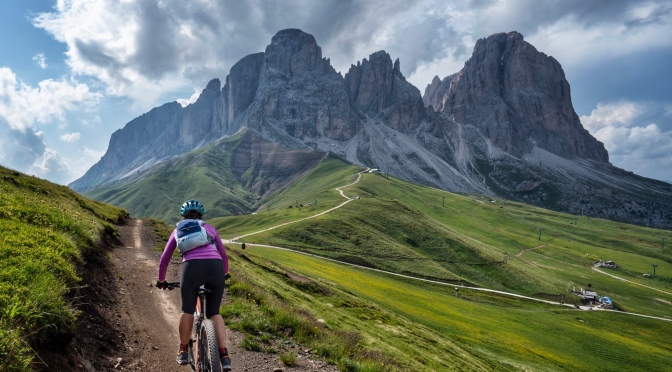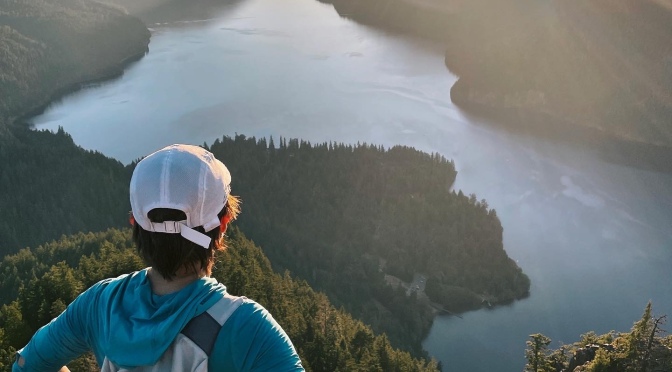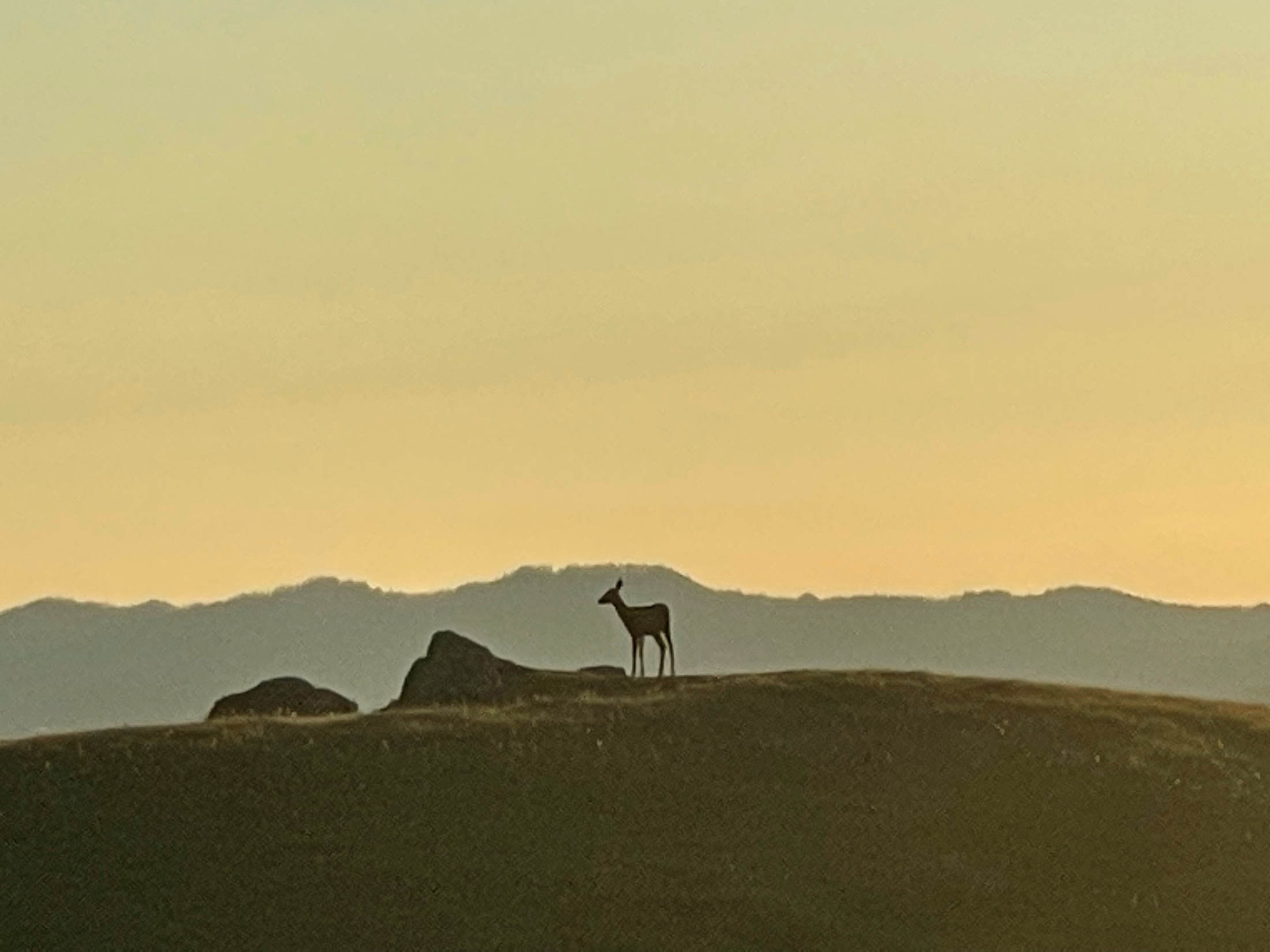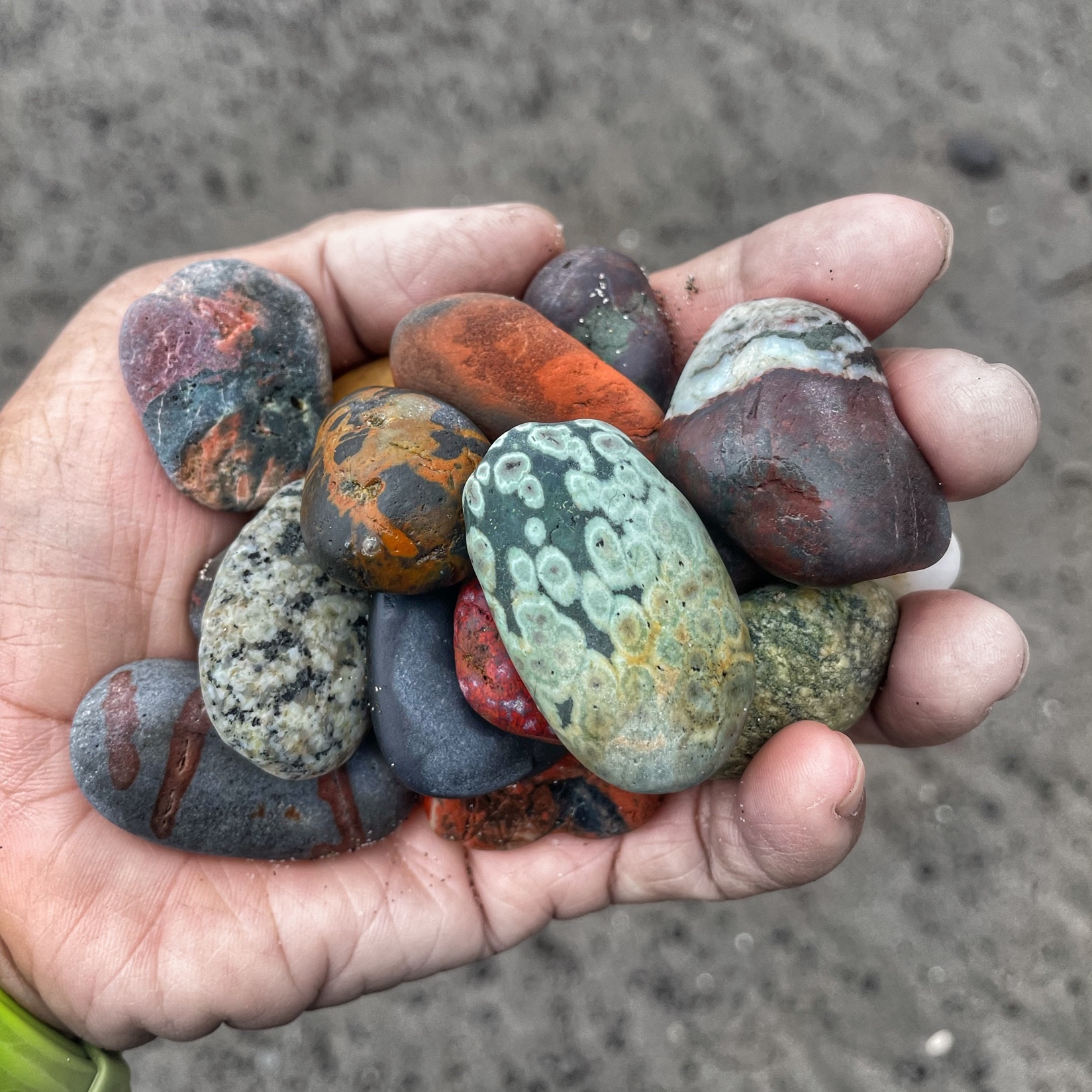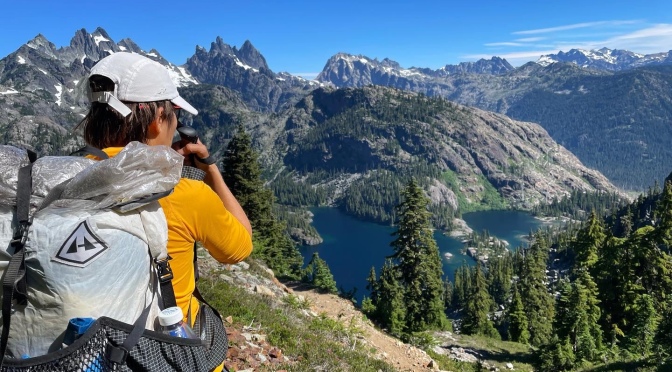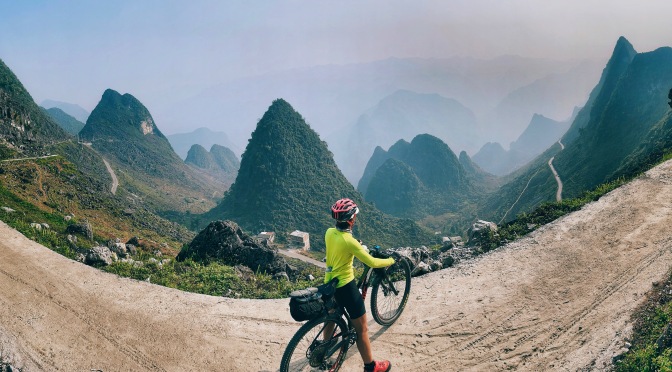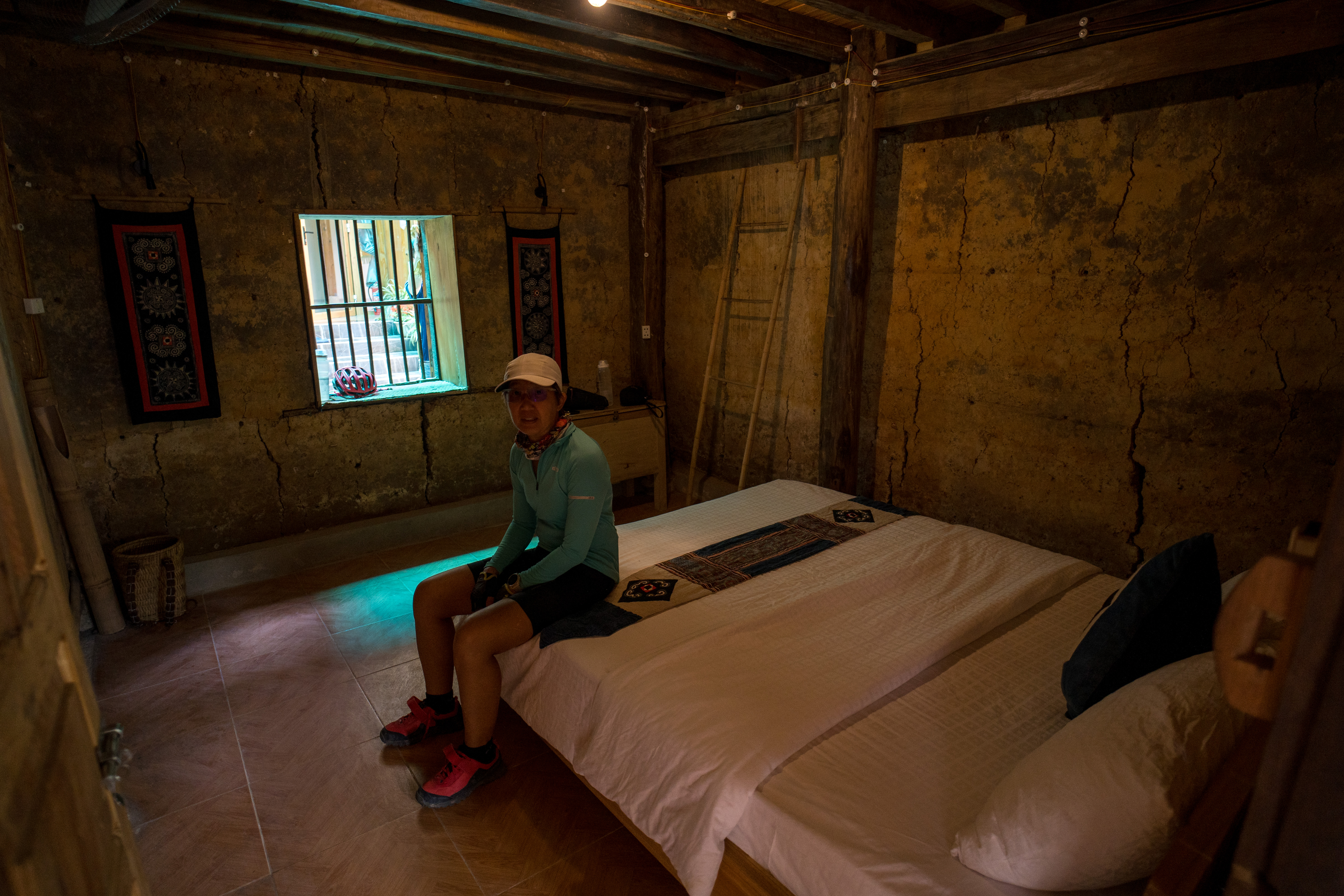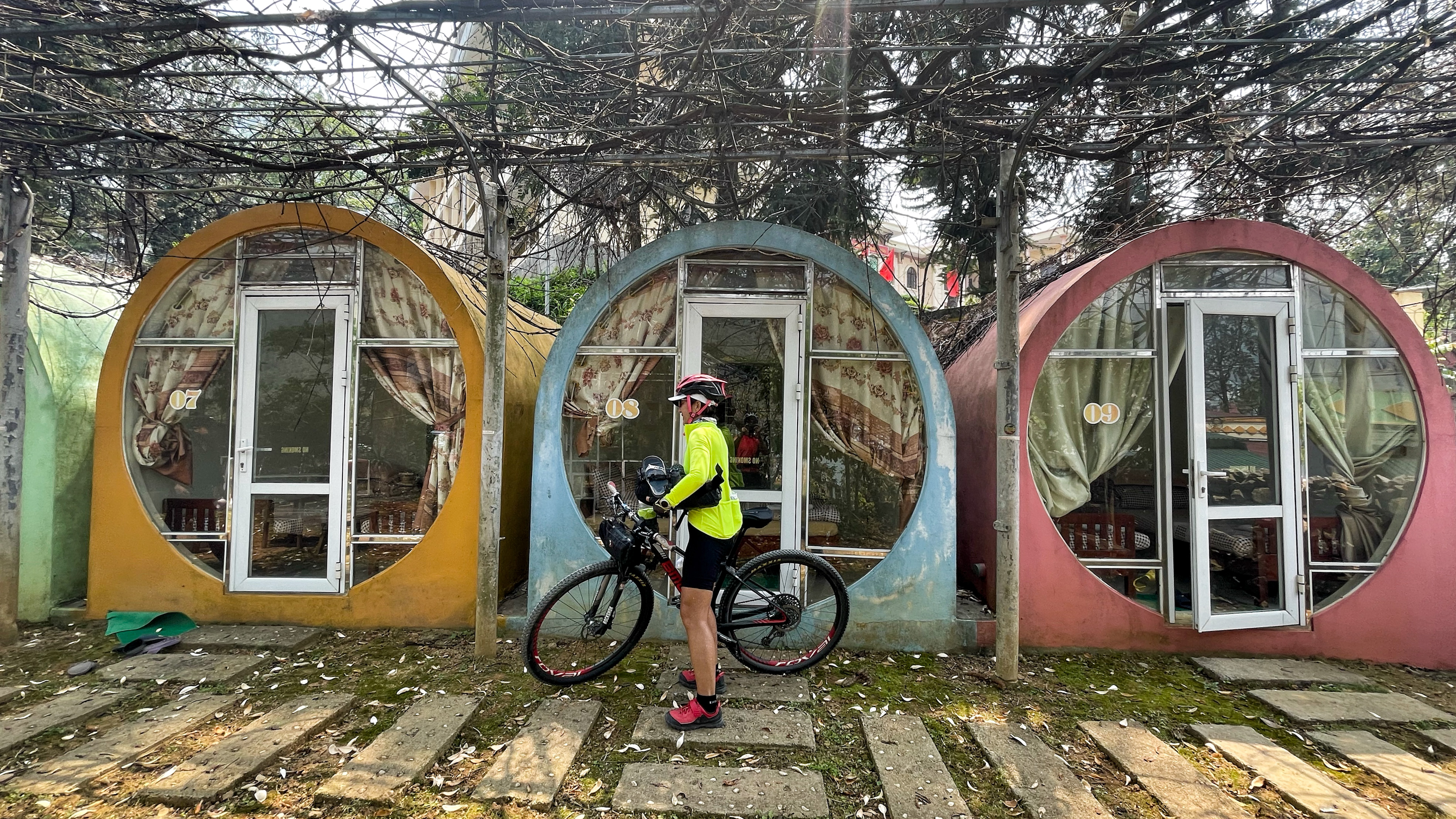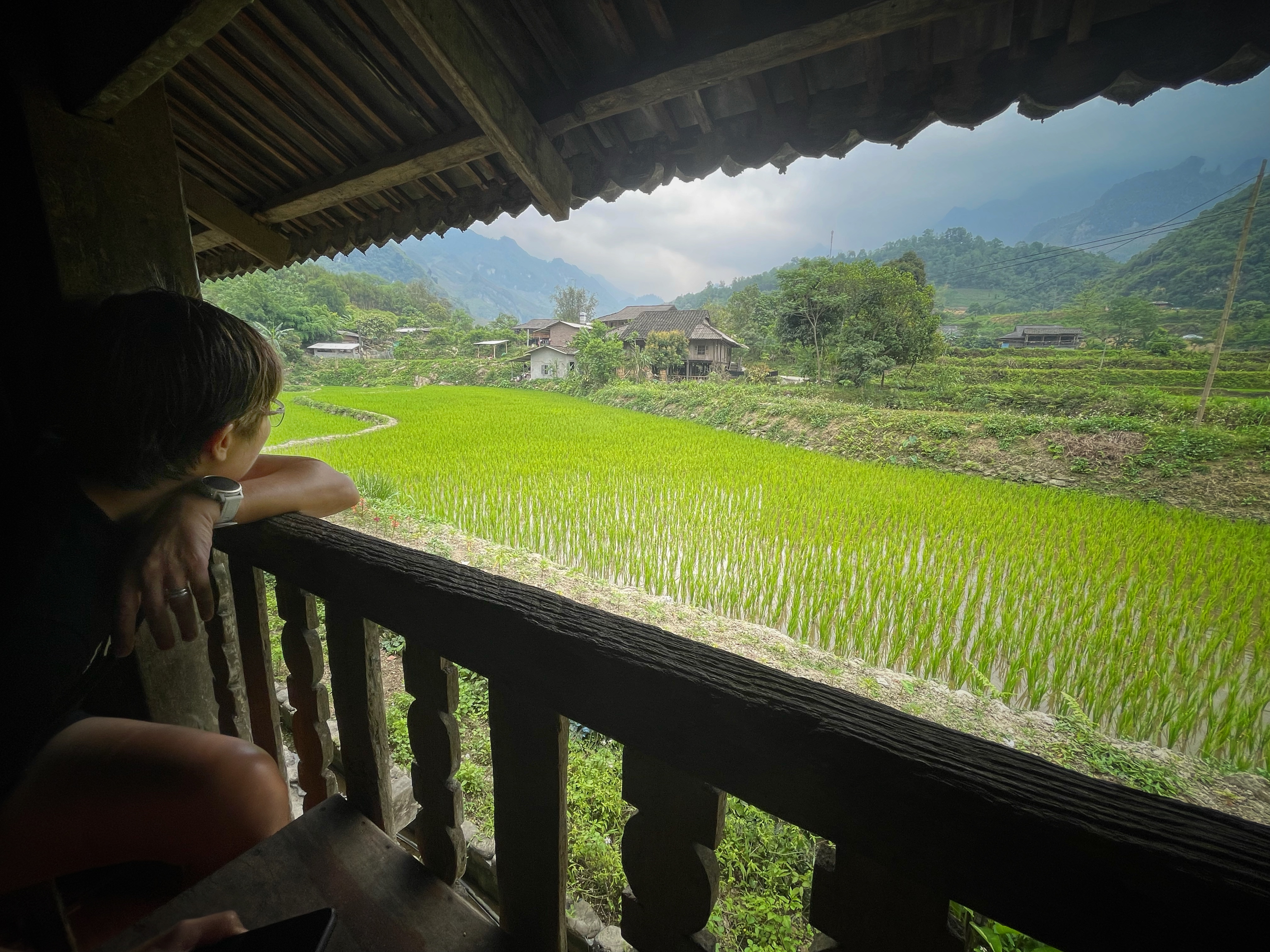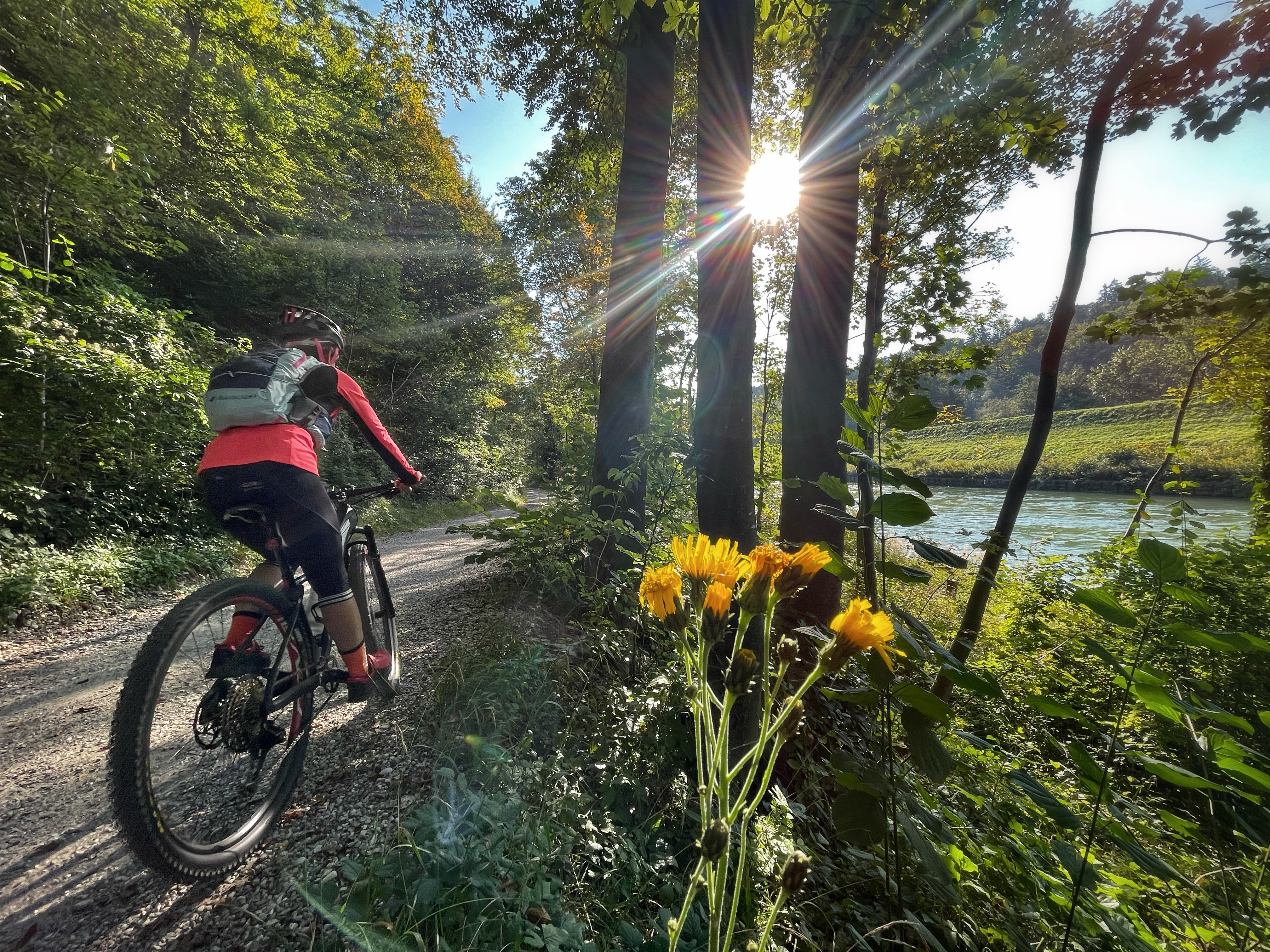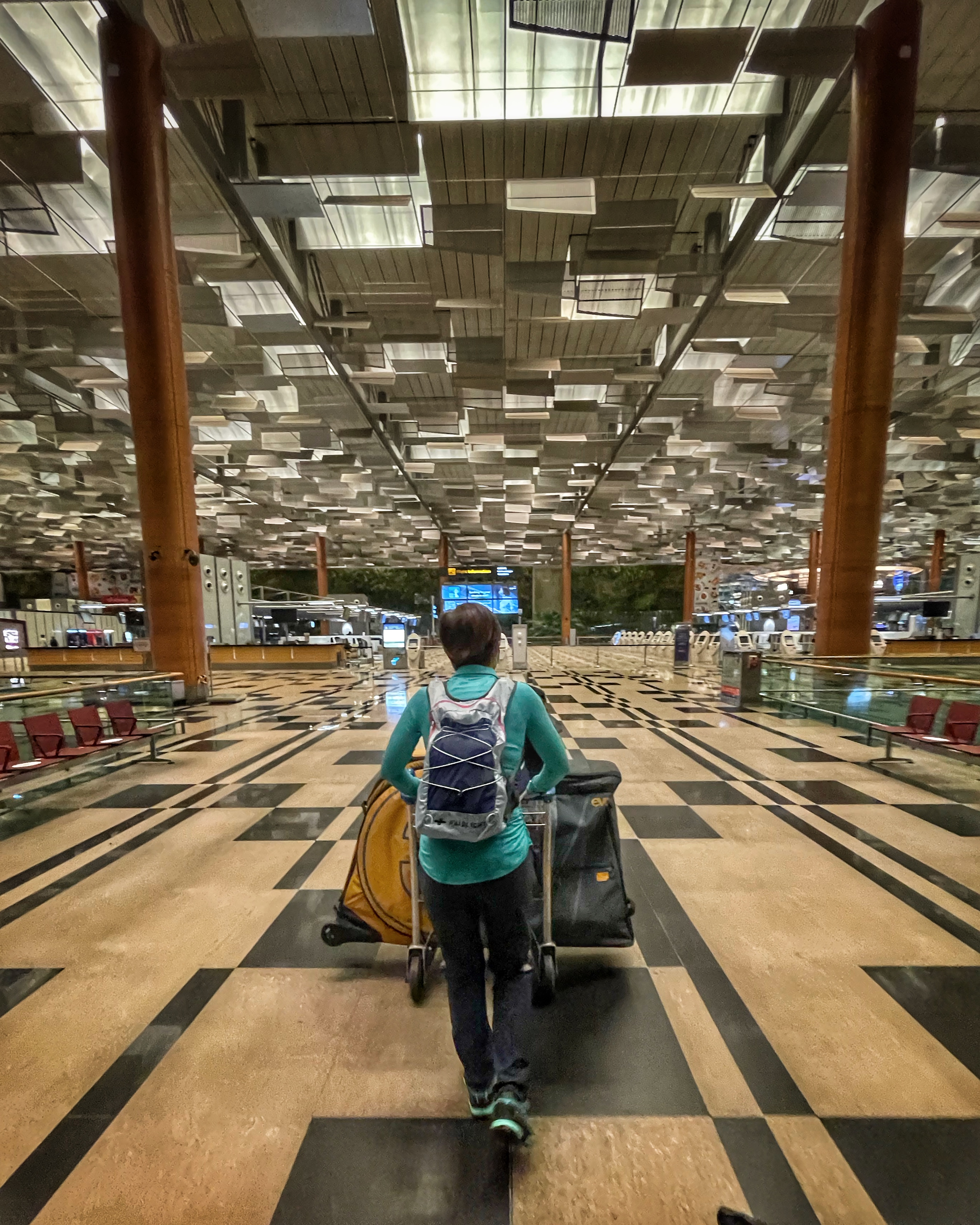I wanted to call this blog post the cycle tour of waterways and old buildings with some mountains in between, because that’s what it was, but that title wouldn’t have gotten me too many hits.

The 560km Munich to Venice cycle route is a mixed surface route that uses mainly cycleways and backroads to connect Germany’s largest southern city with the UNESCO World Heritage city of Venice in Italy, crossing through Austria. It goes over the mountains of the Dolomites, also a UNESCO World Heritage site, and passes through many interesting towns like Bad Tolz, Innsbruck, Brixen, Cortina d’Ampezzo and Treviso.

We combined our trip to Venice with a detour to Val Gardena for a week of mountain biking in the Dolomites! So we took our full-suspension Specialized Epic Evos, strapped on some bikepacking bags with a minimal set of clothing and gear, and with a couple of our friends, Lori and Ilya, set off on our ride from Munich.

There are 2 routes out of Munich on the Official Munich to Venice Cycle Route. I’ve ridden both, and for most people, I can recommend the western route on the cycleways along the Isar River via the towns of Bad Tolz and Lenggries. The Eastern route via Tegensee has some nice riding with long sections on dirt roads, but also a lot of sections on road.

On this trip, to avoid riding in the rain, we took a train from Munich to Lenggries and began our ride from there. We didn’t manage to escape the rain though, but at least it was only for the last hour or so.

Initially, the riding was almost entirely on paved cycleways, but near towns, it would almost always route us through the center of town. We found it best just to follow the official route, as there were certain jems we would otherwise have missed.

Generally, the riding surface is mixed. Other than paved surfaces, we rode gravel, dirt roads and occasionally, a little singletrack. We were happy on our mountain bikes, but we saw lots of different bikes, a lot of ebikes and other mountain bikes, and also hybrids and gravel bikes.

Innsbruck, Austria was an exception to the route going through town. When we passed through Innsbruck, the route took a steep climb on a pretty busy road with no shoulder. Not comfortable with this, we decided to take a train one stop to Matre, where we continued our ride.
A ride into the old part of Innsbruck is worth the detour, and if pressed for time, I would consider taking the train one stop to Matre.
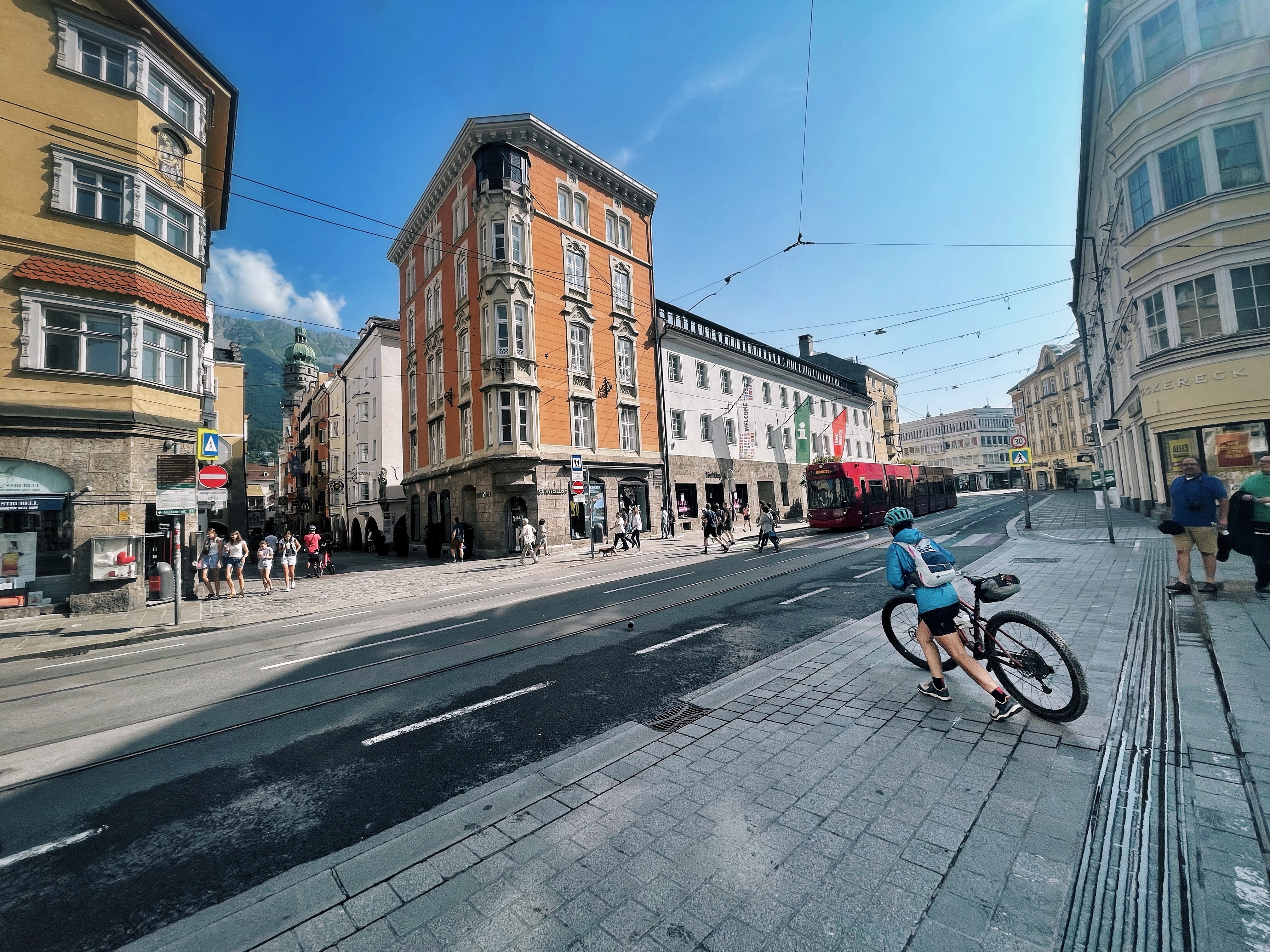
Lori and Ilya were using voice navigation on Komoot, a navigation app. They used Shokz bone conduction headphones, which didn’t interfere with their ability to hear traffic, to receive the instructions. I tried it out, using just the speakers on my iphone, but I couldn’t hear the instructions at times to to trafffic or wind noise. Otherwise though, the voice instructions on Komoot were pretty clear, and the best implementation for off road cycling I’ve come across.
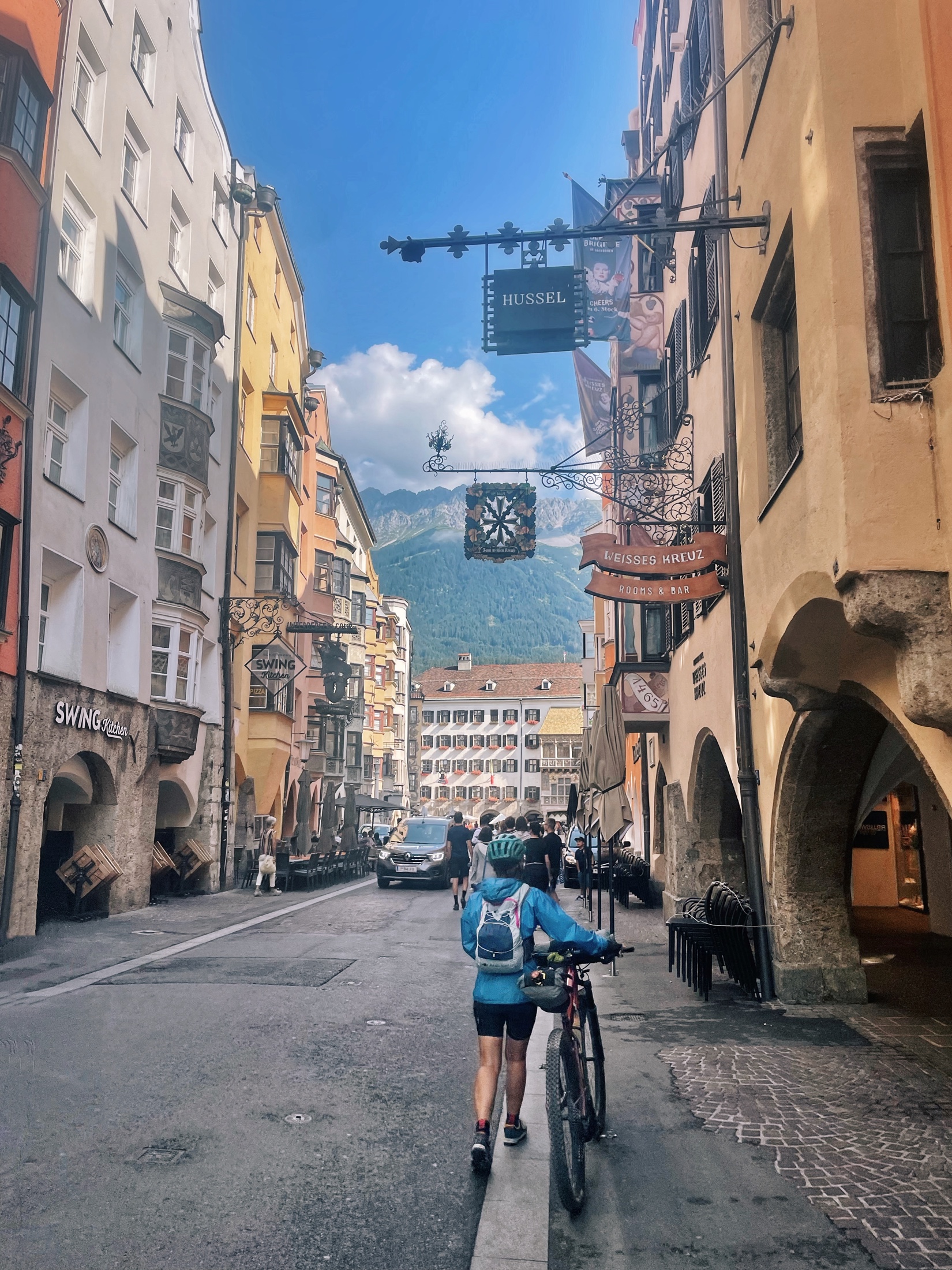
Leaving Innsbruck, we stopped in Brixen and had a rest day there, riding a local trail and enjoyed a food festival. From Brixen, we left the official Munich to Venice route and began climbing to Santa Cristina, a small town in the heart of Val Gardena Dolomites, where we had chosen to spend some time mountain biking.

In Santa Cristina, we stayed at Kedul Bike Lodge (recommended) for 9 days, removed the racks and bikepacking bags, hit the trails and did some exploring.
In general, you are not going to be able to bring your bike with you into your room. Usually, the place where you are staying will have a secure place for you to park your bike, either in a garage, basement or backroom. We locked our bikes together in this area with a simple cable lock and were OK.

Of the three towns in Val Gardena, Ortesei, Selva and Santa Cristina, Santa Cristina is the smallest and located between the other two. Most of our rides started from Selva, so that’s possibly the most convenient town to stay in. Ortesei is the largest, but also the most touristy. We were happy in Santa Cristina and a cycleway links the 3 towns.
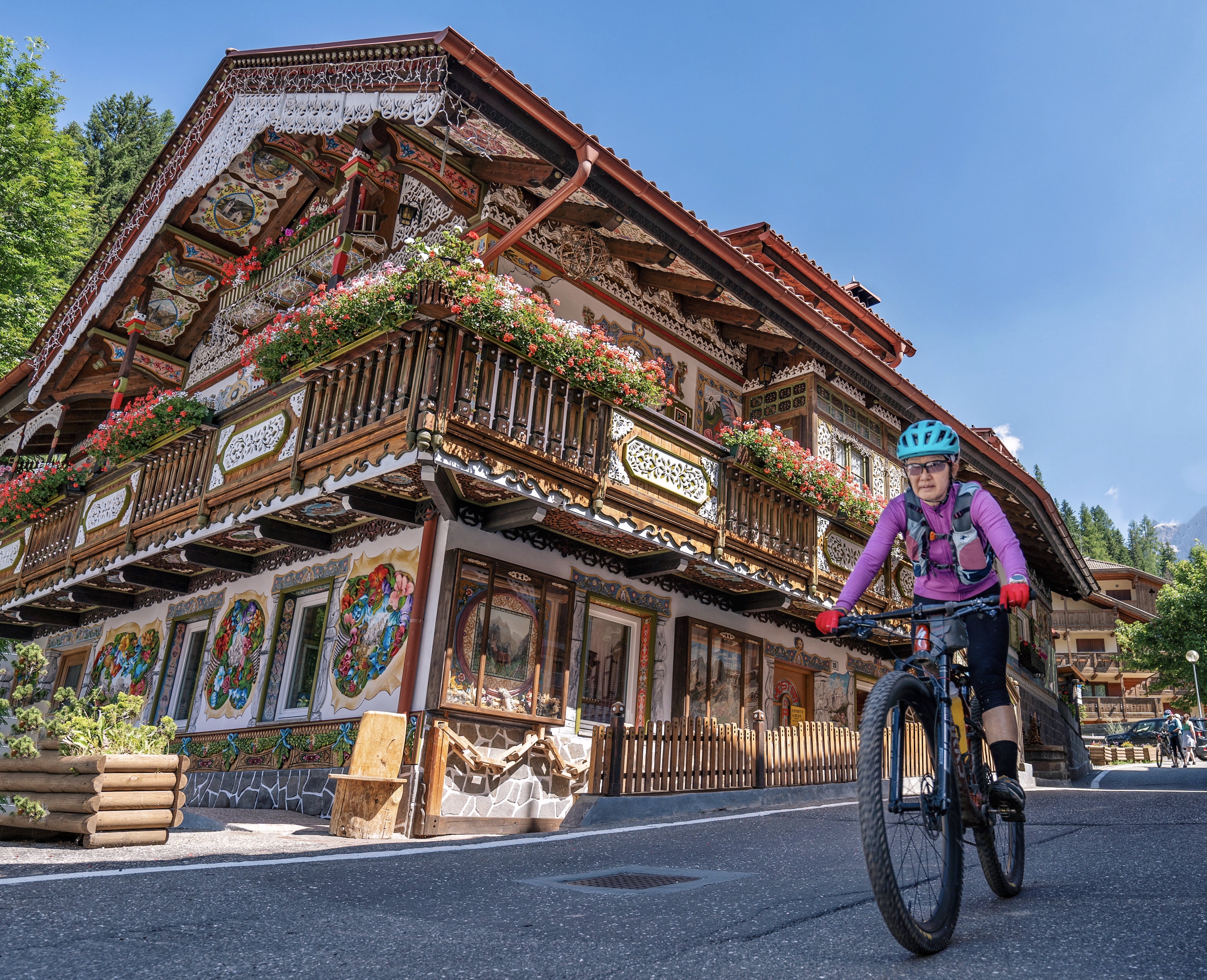
We packed pretty light. Generally just one set of clothes for biking, one set for going out, and one set for sleeping. Having a base in Santa Cristina allowed us to do laundry daily and have a fresh seet of clothes.

We bought the Val Gardena Super Summer pass for 7 days, which allowed us unlimited use of the chairlifts and gondolas in Val Gardena for 5 days over a period of 7 days.

Personally, I feel that there are 2 main MTB specific rides: The Sella Ronda Clockwise and Sella Ronda Anti-Clockwise. They are both very different rides, not the same trail ridden in opposite directions, and they both include many small, bike park style runs. The Clockwise loop utilises 8 lifts and about 400m of climbing and over 4000m of descent on a variety of trails.


The Anti-Clockwise loop is a bigger ride with over 1000m of climbing and fewer lifts. It has more ‘backcountry’ or wilderness type singletrack. They both run about 75km with 4000m of descent if ridden from Santa Cristina and back. I’d suggest getting an early start as the last lift closes at 5pm or 5:30pm.

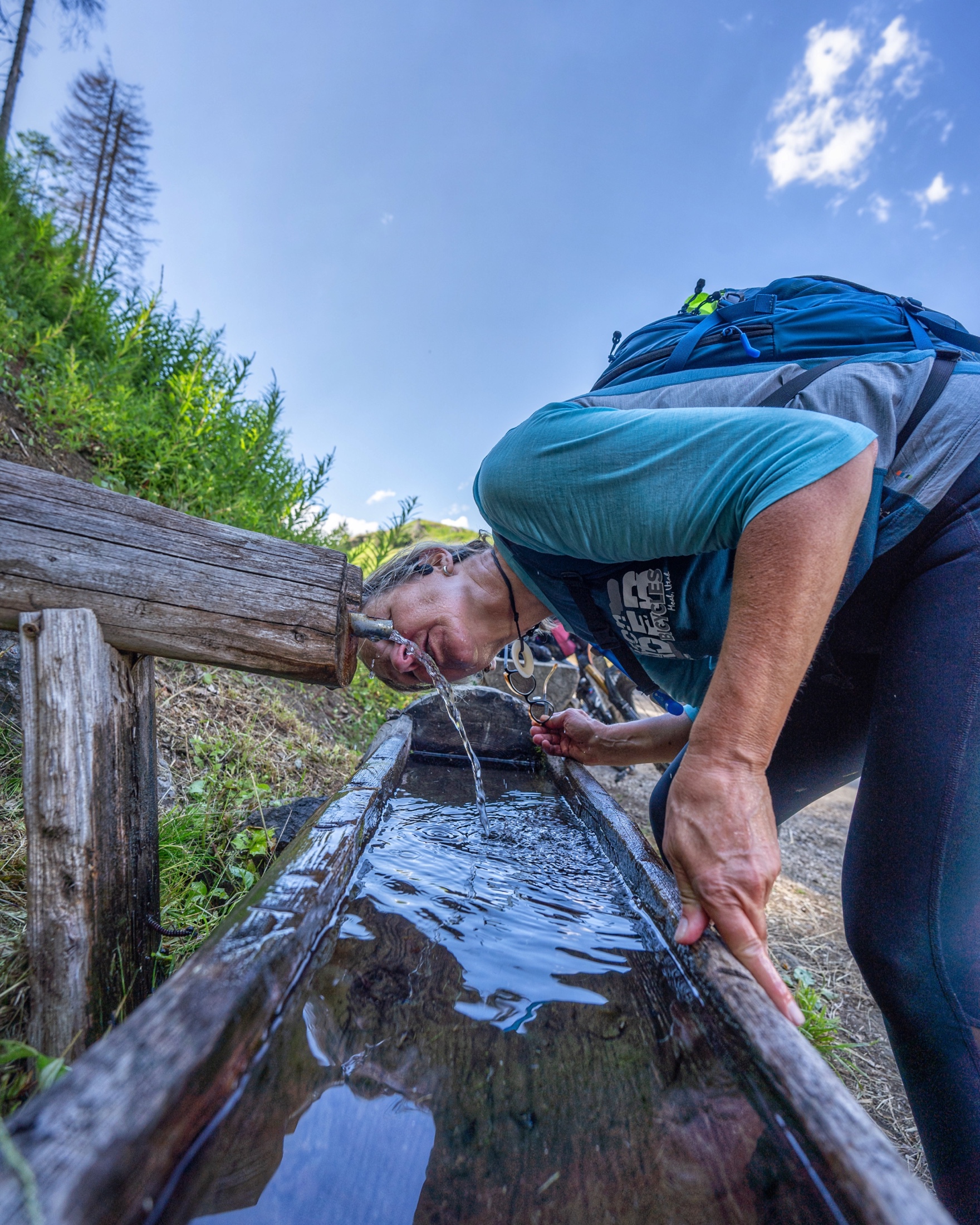

We also rode the Seiser Alm loop, but that’s more double track or gravel riding. Great if you just want the scenery without the technical riding.

Bring spare brake pads. We brought 2 sets each and ended up using all. We had yet another AXS battery failure (warrantied and exchanged when we got home), so that makes 4 AXS battery failures we have had out of our 6. Although all were warrantied, it makes me question the reliability on trips like this. We carried 2 spare AXS batteries on this trip and 2 CR2032 batteries for the shifters (we had to replace one on this trip). There’s no shortage of bike shops in Val Gardena, but if there’s something specific for your bike, like a spare hanger, I’d bring one with me.

For a shorter 4 day plan, I would suggest getting the 4 day Summer Super Saver Pass, which allows 3 days out of 4 to use the lifts. Ride the Sella Ronda Clockwise on the first day, Ride the Sella Ronda Anti-Clockwise on the last day, and do a short hike, like the Sassolungo, on one of the days in between.
To do the Sassolungo hike, we took the bus to Passo Sella, then take the coffin-like Telecabina Sassolungo cablecar to the Toni Demetz Alpine Hut, walking down the other side to the Vincenzo Refugio for lunch, then various trails to the Monte Seura chair lift, then more trails to a waterfall, and back to Kedul Bike Lodge in Santa Cristina.

When it was time to leave, we took a bike shuttle from Santa Cristina to Cortina d’Ampezzo, to resume the Munich to Venice Cycle Route.

We had gotten into the habit of packing a sandwich during breakfast to take with us on the ride, and this has always turned out to be a good idea, allowing us to eat something even if we were not near a town or restaurant.
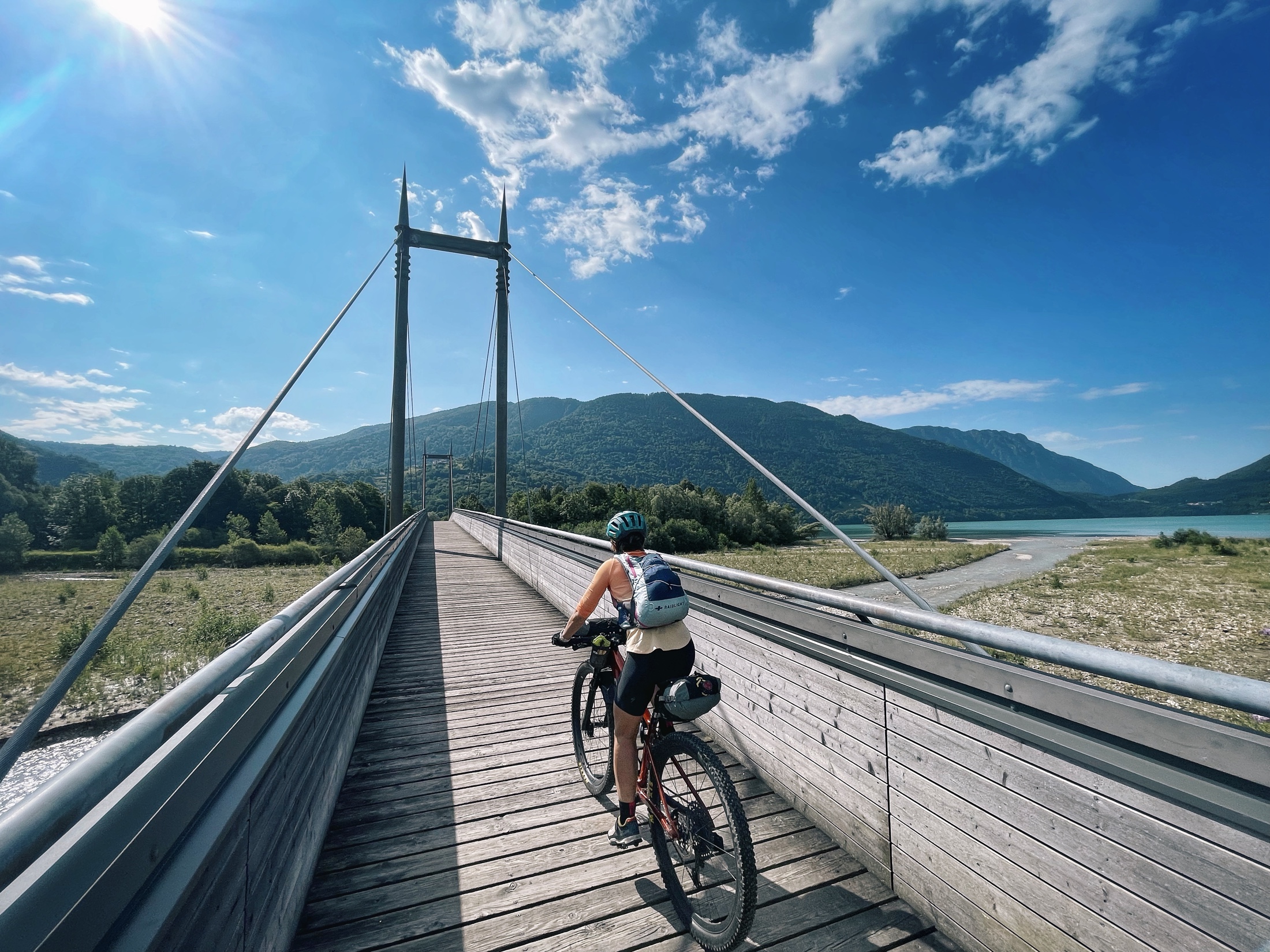
Resuming the Munich to Venice route from Cortina d’Ampezzo, we stopped for the night at Ponte Nelle Alpi. Our Air B&B, La Locanda, was a former Michelin Bib Gourmand Restaurant, so we made a revservation to have dinner there, and it was not only awesome, but also very reasonably priced. I did feel a little underdressed at most restaurants. Fortunately, I had my Decathlon Forclaz sandals, which I were a cut above the flip flops I normally carry, but I wished I had brought longer shorts (I’ve since bought these Fox Ranger Shorts and will be adding these to the packing list).

The further south we rode, the hotter the days got. Early mornings, when we first set off were usually cool, but by early afternoon, it would get really hot, with a chance of thunderstorms by late afternoon. The afternoon thunderstorms could be fierce, with heavy rain or hail, but were mostly brief, and over within an hour or two. We kept our riding days short, trying to reach our destination by 3pm to avoid these thunderstorms.
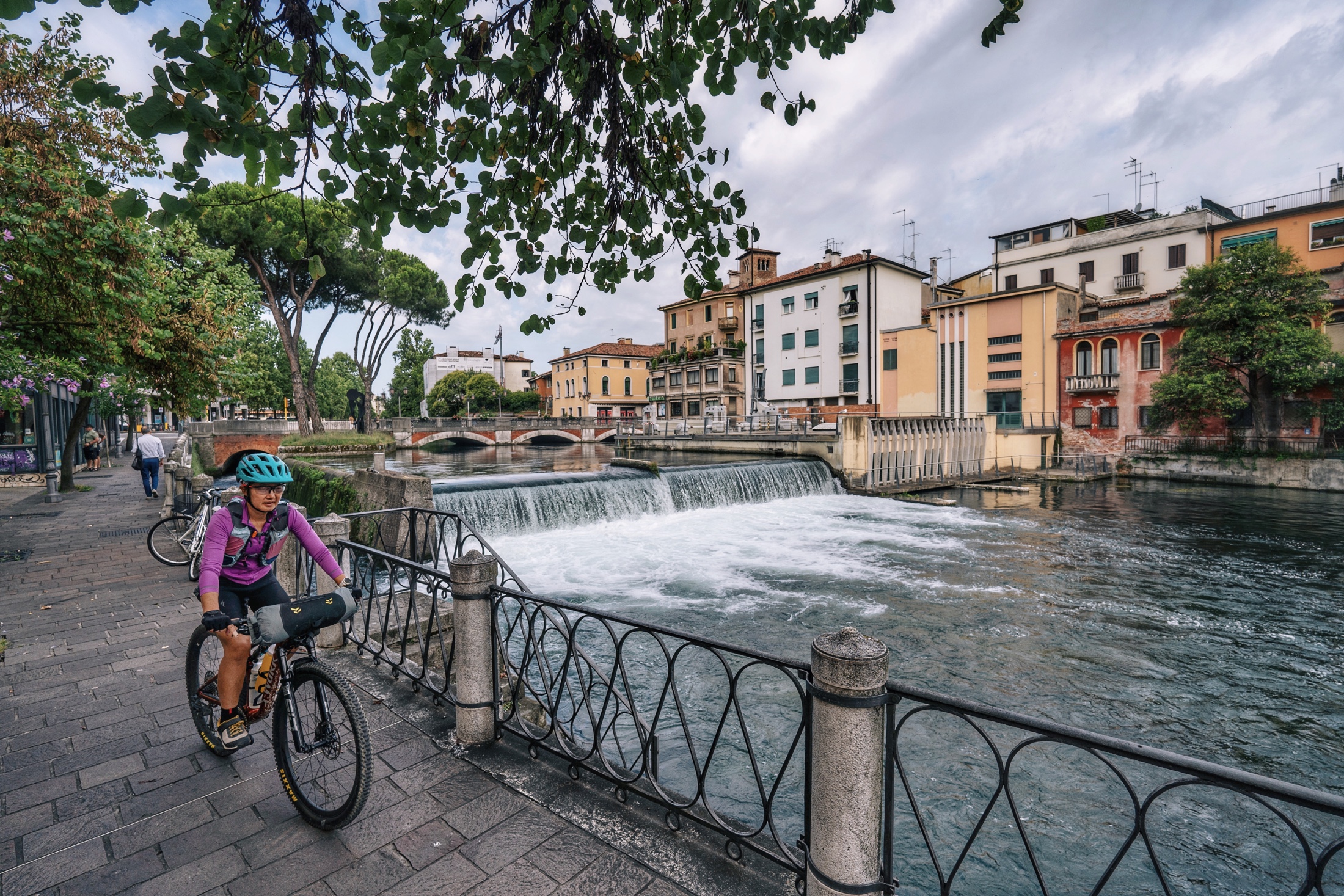
Mestre was the last stop for us. Bikes aren’t allowed on Venice, so we stayed at a hotel in Mestre, parked our bikes there and took the train over to Venice. We said our goodbyes in Venice to Lori and Ilya, who were staying a bit longer, and would then be making their way to the UK. Laura and I would take the train to Innsbruck, then ride back to Munich from Innsbruck.

How to get back to Munich from Venice? We took the train from Mestre back to Innsbruck and rode the rest of the way back to Munich, but you could take the train the entire way to Munich. The trick is that you can only take the regional trains, which allow bikes. It’s worth going down to the Tren Italia Ticketing office to sort this out. Lori and Ilya continued their ride to Verona. They got bike boxes from the local Decathlon (email them ahead of time and let them know when you are coming to collect the boxes), packed their bikes and flew off to the UK from there.

